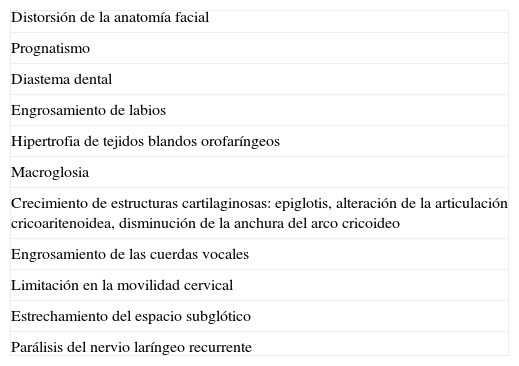An excess of growth hormone is responsible for the phenotypical characteristics of acromegaly. Tissue hypertrophy and growth also affect the airway, potentially making perioperative management difficult. If tests to foresee the likelihood of difficult airway have limitations affecting their sensitivity, specificity and predictive value even in the normal population, their reliability in patients with acromegaly is still more doubtful. At this time, videoassisted or optical laryngoscopes can offer a way to facilitate intubation in these patients. We report 3 cases in which the AirTraq optical laryngoscope was used to gain a full view of the vocal cords in acromegalic patients scheduled for pituitary surgery by the transsphenoidal route.
Un exceso de hormona de crecimiento es el responsable del fenotipo característico en los sujetos acromegálicos. La hipertrofia y crecimiento de tejidos también afecta a la vía aérea, con posible dificultad para su tratamiento perioperatorio. Si ya en la población sana los tests predictivos de vía aérea difícil tienen una validez limitada en cuanto a sensibilidad, especificidad y valores predictivos, en pacientes acromegálicos su fiabilidad es aún más dudosa. En la actualidad, los videolaringoscopios y laringoscopios ópticos podrían representar una opción a tener en cuenta para facilitar la intubación en este tipo de pacientes. Presentamos tres pacientes acromegálicos programados para cirugía hipofisaria transesfenoidal, en los que el empleo del laringoscopio óptico Airtraq® permitió la completa visualización de las cuerdas vocales consiguiendo una fácil intubación.
Artículo
Comprando el artículo el PDF del mismo podrá ser descargado
Precio 19,34 €
Comprar ahora









